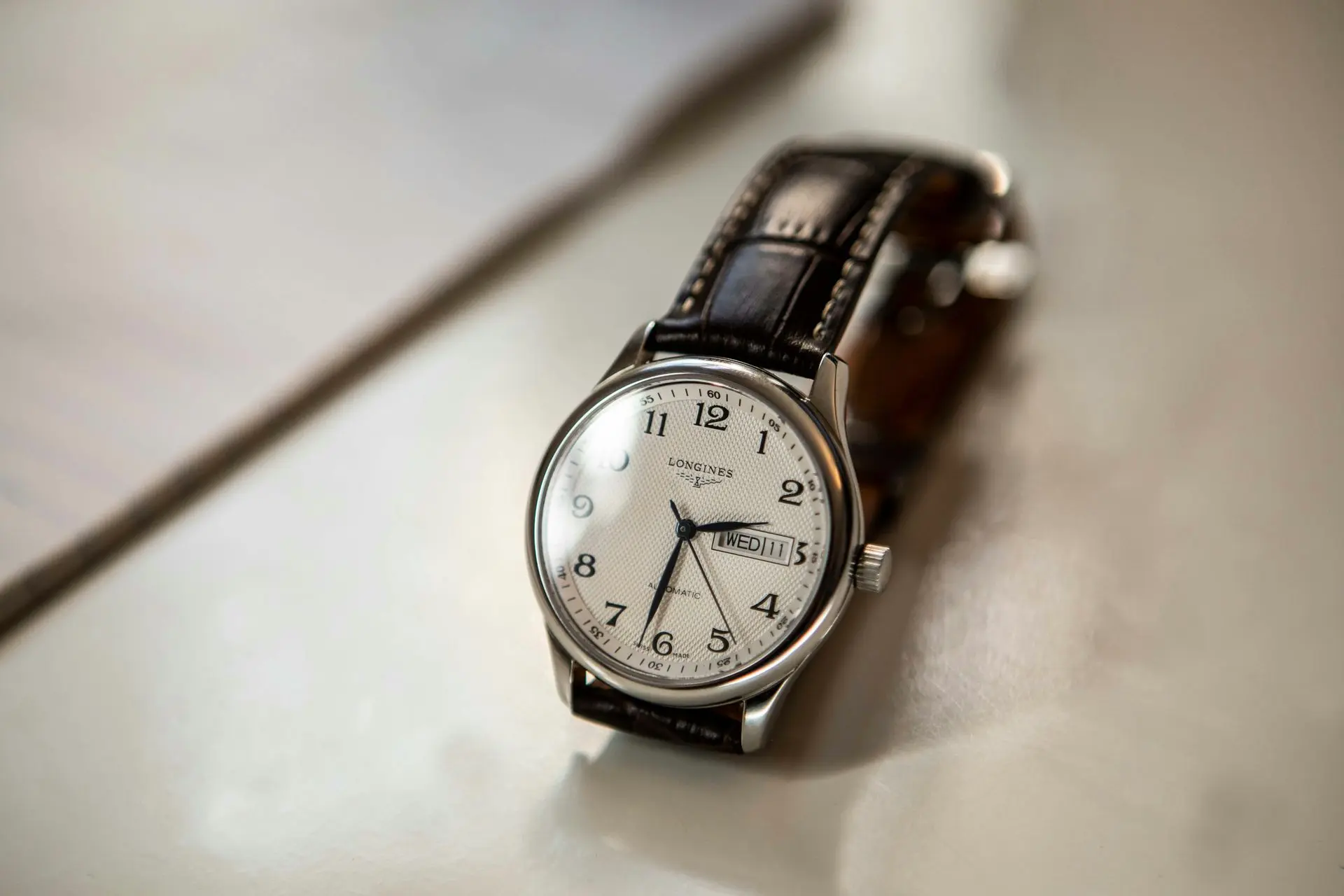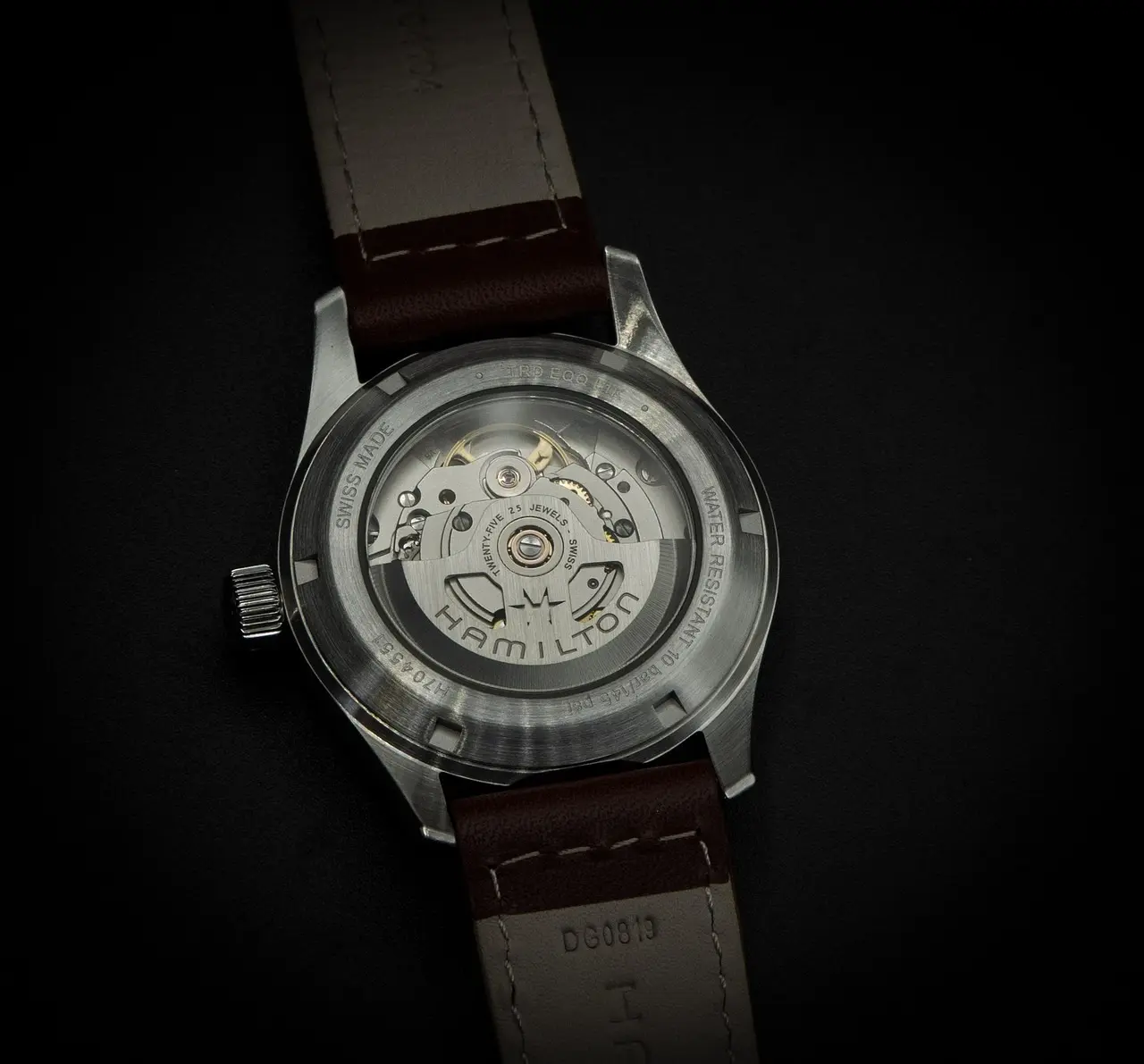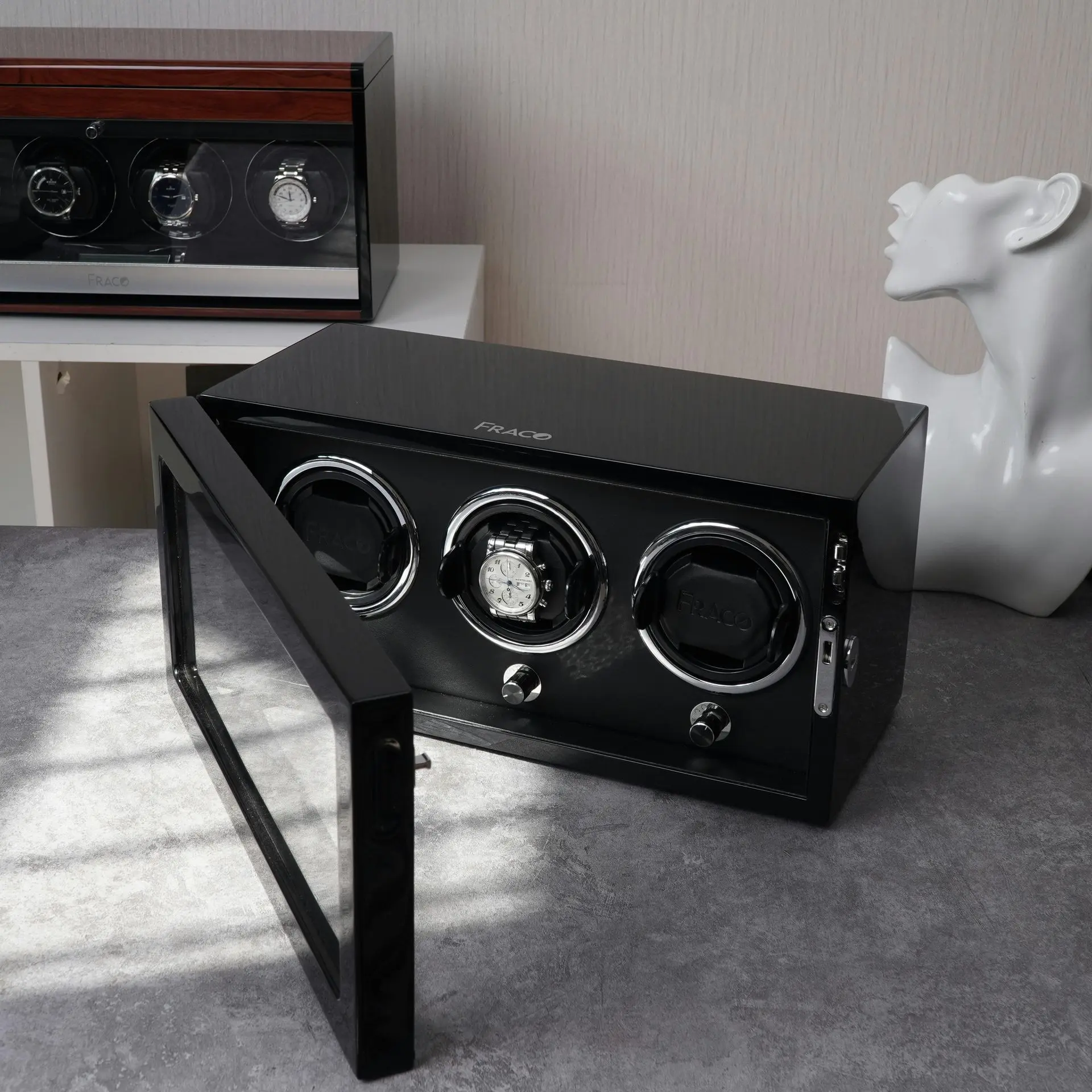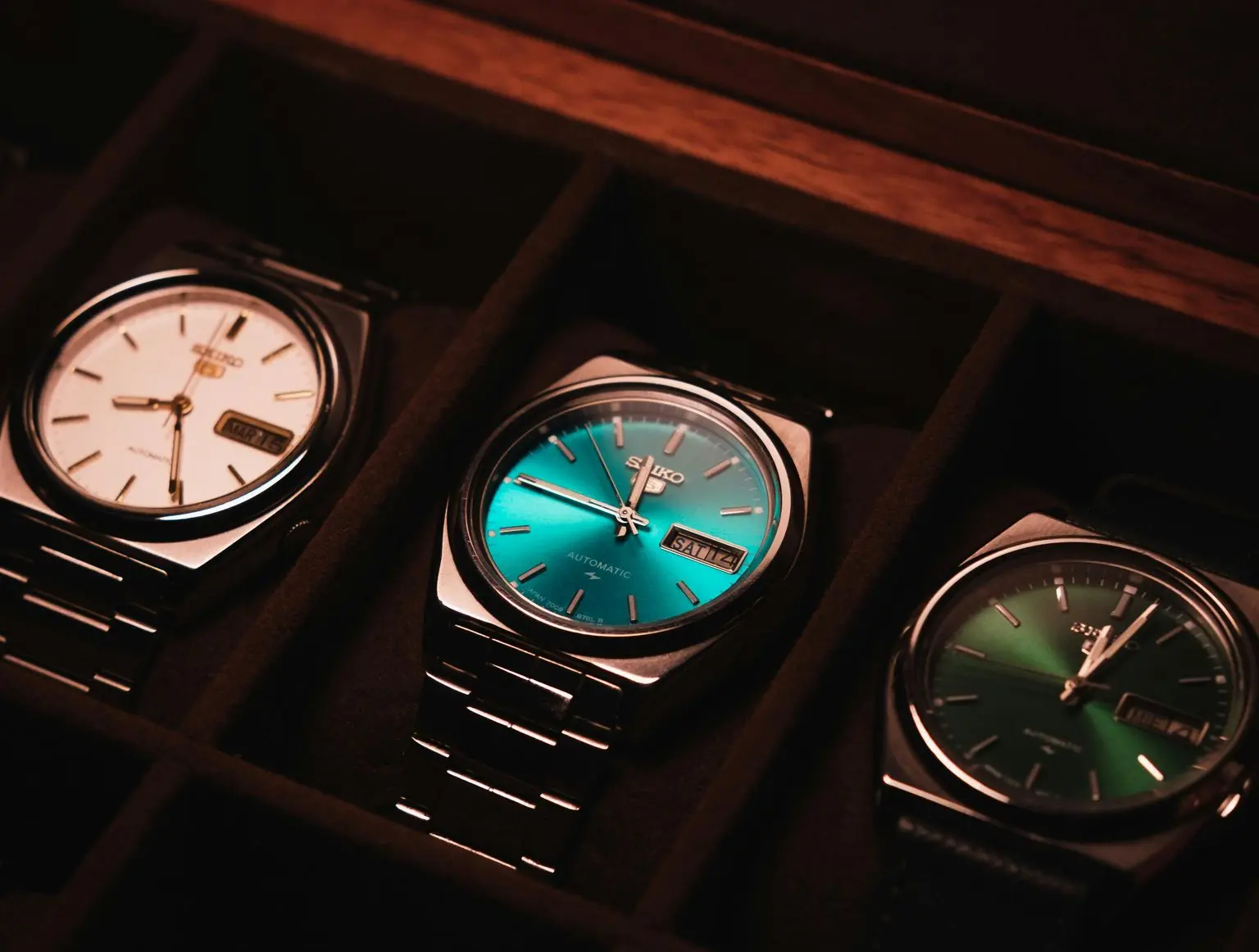The functioning of an automatic watch is not as difficult as it may seem. These watches have a smart self-winding mechanism, which converts your daily movement of the wrist into power. None of the batteries, none of the fuss, and none of the ticking, which was only for mechanics, was smooth. You will find out in this beginner-friendly tutorial how they work, their most important components, and the reason why they remain so popular in the realm of watches.
What is an Automatic Watch?
An automatic watch, or self-winding watch, is a timepiece that is a mechanical object that does not require a battery to be powered. Rather, it operates itself by running using the movement of your wrist. Having it on, a little clockwork in it picks up your movement and turns it into energy.
An automatic watch automatically winds itself as you move, unlike the manual watches that need to be wound by hand. This makes it easier, and yet it has retained the mechanical beauty that many watch lovers adore.
When you have seen a second hand go round the dial in a smooth motion, not going tick, you must have been looking at an automatic watch. It has one of the loveliest sweeps.
How do automatic watches work: The Basics
How then does an automatic watch work? The solution to this is easy; it converts your natural movement to stored energy.
In moving your wrist, a part known as the rotor rotates within the case. This spinning movement drives the mainspring, which powers the watch. The energy is slowly discharged by the mainspring and exists in a system of gears. At last that energy is controlled by the escapement and the balance wheel, and the time remains constant.
The action may be likened to a windmill:
- The wind is your movement of the wrist.
- The spinning blades are referred to as the rotor.
- The energy storage tank is the mainspring.
- The control valve is the escapement.
- The harmony of the heart is the balance wheel.
An automatic watch is alive as long as you wear it on a daily basis. When you put it away for two or three days, it will cease, but a turn with the hand or putting it on again makes it start at once.
The Main Components of an Automatic Watch
To appreciate the functioning of an automatic watch, you must be aware of the functions of its principal components. The individual pieces are collaborative in a mini-orchestra way.
1. Rotor: The Self-Wounding Engine
A rotor is a semi-circular metal component within the watch that does not have a fixed position but moves with the movement of the wrist. Suppose a small pendulum was rotating round. The spin turns the mainspring, and you do not have to touch the crown.
Rotors of good quality are usually curved or adorned, and on some luxury watches are even seen through a transparent case back.
2. Mainspring: The Storage of Energy
The mainspring is a strip of steel that is closely coiled. When the rotor winds the spring, it stores energy like a toy that is wound up. It unwinds slowly, and this gives out energy to the rest of the movement.
Power reserves of the watch are determined by the quantity of energy that the watch can hold.
3. Gear Train: The Transmission of Power
The gear train consists of a group of small gears that transfer the energy that is stored in the mainspring to the escapement. Every gear is correctly sized and ultimately placed to ensure the smooth running of the watch. The time can be broken by even a small wrong movement.
4. Escapement: The Time Regulator
Escapement determines which amounts of energy are emitted at a time. In its absence, the mainspring would unwind too fast and the watch would come to a halt. The escapement keeps the energy flowing in small bursts and the ticking movement low so as to keep the movement under check.
5. Balance Wheel: The Heartbeat of the Watch
The balance wheel is pendulum-like in its movement. It assists in the regulation of the escapement with each swing and makes the watch move with the same time. This is the reason as to why the watch lovers refer to it as the heartbeat of the timepiece.
All the elements within the watch are extremely minute, yet they complement each other. This is why people are fascinated by automatic watches as marvels of engineering. To truly appreciate this craftsmanship, you can explore an interactive 3D model of the movement here.
How Does the Self-Winding Movement Work?
We shall do it step by step so that it is easy:
- You put on your watch and shake your wrist.
- Your movements cause free rotation of the rotor.
- The rotor coils up the mainspring.
- The energy is stored in the mainspring.
- Power is transmitted by the gear train.
- The escapement discharges power in fine bursts.
- The balance wheel controls such bursts.
- The hands keep rotating around the dial.
This is the reason why your watch can run without a battery due to this continuous cycle. When you leave it on a shelf for 2-3 days, it will cease as the mainspring does not have any new energy. But it will be immediately brought to start by a few gentle movements of the wrist or winding through the crown.
A watch winder is commonly used by watch collectors who usually switch between a number of watches so that even those not being worn can maintain running time.
Automatic Watch Power Reserve: How Long Will an Automatic Watch Run?
The power reserve is the duration your watch will keep on going even after you have taken it off.
- Automatic watches have a power supply ranging between 24 and 80 hours.
- Luxury models may go as far as 10 days onwards.
For example:
- Suppose you put 40 hours of power in your watch and you remove it on Friday evening, there is a high probability that it will still be operating on Sunday morning.
- You might have to do it all over again in case you do not wear it longer.
Tip: Watch Winder: A watch winder may be required in case you have two or more watches and change them regularly. It also charges your watches and makes them available to use all the time.
Advantages of Automatic Watches
People have a lot of reasons why they prefer taking automatic watches as compared to quartz watches.
- No Battery Required: You do not have to think about replacing your battery.
- Smooth sweeping hand: The second hand moves smoothly, as compared to the ticking of quartz.
- Lifespan: Given adequate maintenance, an automatic watch can be inherited in decades, and it is frequently used as a family property.
- Craftsmanship: This is because owning one will tie you to hundreds of years or watchmaking history.
- Sustainable: Because it operates on your motion, no batteries are tossed in the trash.
To most people, it is more personal to use an automatic watch. It breathes because you are wearing it and establishes a special bond between you and your watch.
Common Myths About Automatic Watches
One can easily listen to all the misinformation regarding automatic watches. Let’s clear a few common myths:
1. Legend: They are supposed to never require servicing.
Fact: Just like the engine of a car, they require regular cleaning and oiling. Every 3 to 5 years is recommended.
2. Legend: They are just so right.
Fact: Automatic watches are accurate, although not as precise as the quartz. One or two seconds more or less every day are normal.
3. Legend: They can’t stop running.
Fact: They will still stop when they are not worn, but that is normal. They are started once more by a shake or a wind.
Knowing these facts, you will be more pleased to have your watch and not be disappointed.
How to Maintain an Automatic Watch
Caring about your watch will make it last a lifetime. Here is how you can do it:
- Store it Safely: Store it in a watch box or a pouch; do not keep it in the dust, moisture, or strong magnets.
- Wear it regularly: To hold it wound, there is no better way than to wear it.
- Wind when needed: Unless worn on a daily basis, do 20-30 gentle crown turns every now and then.
- Servicing on time: Get the movement cleaned, oiled, and recalibrated by a professional after every 3 to 5 years.
- Use a watch winder: In case you have more than one watch, a winder will have the watches that you are not wearing so that they will be available when you want them.
And with these practices, these automatic watches will not only tell time, but they will also remember decades.
Should You Buy an Automatic Watch? (Beginner’s Guide)
Automatic watches do not only keep time. They are art and works of engineering that get you into history.
You ought to take it into consideration when you:
- Value art and design.
- And rather than buying a watch that will wear out within a few years, have one that will continue serving another twenty years with care.
- Like the sweeping second hand, not ticking.
- Like a timepiece that is not run by a battery.
The experience of making a purchase of your first automatic watch is a rewarding one. It is not merely about being able to tell time, but it is about putting on a story.
Conclusion
This is all you need to know about the functioning of an automatic watch. The rotor, mainspring, gear train, escapement, and balance wheel all have a role to play in making this Self-Winding masterpiece, which only comes alive as you move. Automatic watches are eternal works of art and can be proudly worn about.
At LEITZEIT, we design automatic watches with the combination of contemporary style and traditional watchmaking. The mission is to deliver timepieces that are high quality, classy, and durable. Visit us now and see how beautiful it is to have an automatic watch.